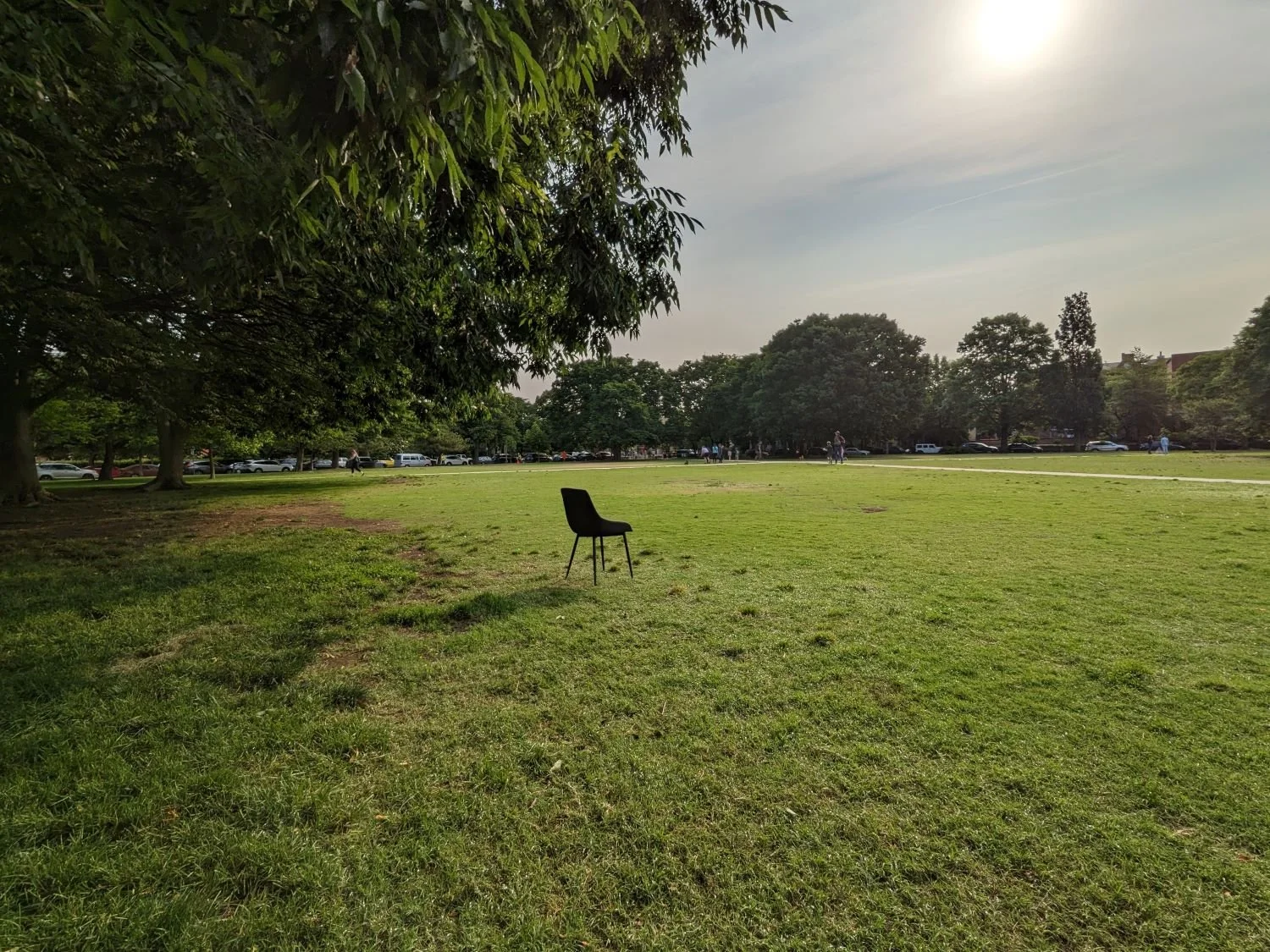Chair Theory
Lesser Pompaes and All
“Why not? Everything is so strange that even this is possible.” - Jorge Luis Borges
The train to LA from Fullerton passes through a decent amount of industrial areas the closer it gets to LA Union Station. The train would tear past stretches of these industrial parks, and that’s where you would briefly find them: the chairs.
Very often (nay, too often) would there be an apparently abandoned chair in the back lot of some construction site or some loading dock or really just near storage warehouses. I would risk that you already know what I’m talking about. Picture it now: you see the warehouse-looking building, blistered by the sun. You see the industrial onramp that leads to an uninspiring doorway with economically sufficient windows. You see the random backyard of this forgotten place; it’s pavement ripped, and there prevail the world’s strongest weeds. And then, near the back but not at the full end of the lot, you see it there: a chair.
Sometimes, it’s a desk from a highschool. Sometimes, it’s a fold-up from Ikea. Sometimes it’s a garden chair. Sometimes, it’s one of those rubbery beach chairs that were specifically sold at Target in the late 90’s, but there is always some absolutely random chair in a field somewhere.
I first discovered these chairs at a uniquely formative moment in my life. I was in the research phase of my master’s, and I was reading deeply into my field of study, a philosophy of language called Semiotics (full disclosure, this will eventually become a regular theme of this newsletter, if not already). I observed these industrial parks, reading its elements as predictable data of a context that provided meaning to each other element. Thus, I found these forlorn chairs absolutely hilarious. They hardly seemed to belong, and yet they were ostensibly forced to be there.
My original chair theory was that you can tell how hospitable someone is based on their chairs. I saw these random desk-chairs in the middle of a busted parking lot or backyard of a freaking sand factory to be hilarious. As a semiotic sign, these chairs might signal some meaning like cruel management. “Have a nice lunch, buddy!” Then someone goes there to…what, eat? Seriously?
What is the deal with these chairs?
My train rides were rich with wonder.
Moving to Boston, it seemed to be the end of my chair hunting days. I didn’t see them there. Though my chair theory might still be right, rouge chairs didn’t really seem to be people’s “thing” there. Maybe I hadn’t looked hard enough. I also didn’t get too far with quarantines happening. But for one moment, I never saw one of these forsaken chairs. Here is the most adjacent chair I saw while there.
It might be important to note that this occurred in the before-times. This was before COVID-19, and I thought perhaps that had whipped out this cultural practice of carry-then-abandon a desk chair until one golden day.
DC hasn’t failed me yet, and the other day it showed me a sign of humanity’s return in a brightness not yet seen since those before-time. Behold this dumb, solitary chair:
Who put this here!? Who put this chair right here?
I still observe chairs as a hilarious sign, but I have a new chair theory, a new depth of appreciation for them now. To me, this is something now more like a natural phenomenon, like how in Southern California there will be these little silver fish that rush to the shoreline and throw themselves on the beach, or maybe it’s something more of a mechanical, rather than natural, wonder, something more akin to Stonehenge.
How else am I to understand these chairs? Some wild animal (a human!) brought this chair from somewhere else, and put it here. That’s it! They brought this chair from somewhere else (really) and put it.
The chairs are a hint of a moment in history beyond knowledge. What happened here? What did they use the chair for? Did someone sit down and… smoke? talk? About what? And right here? What was going on, and why did it require a chair, an ultimate tool of civilization, right here.
Every chair brings with it the same wonder of an excavation, some lesser Pompae, making a site for something profound but intensely out of touch. We don’t know how they got there. We cannot know how either.
Life is incredible, and people are fascinating.
More soon,
Trevor
Now-reading affiliate links:

